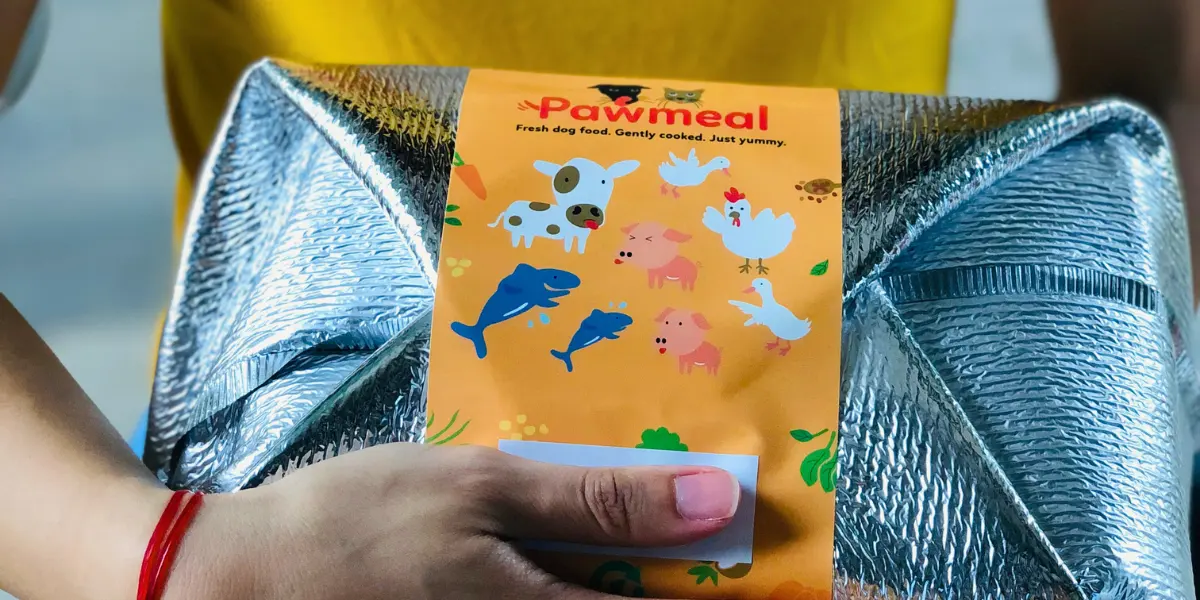
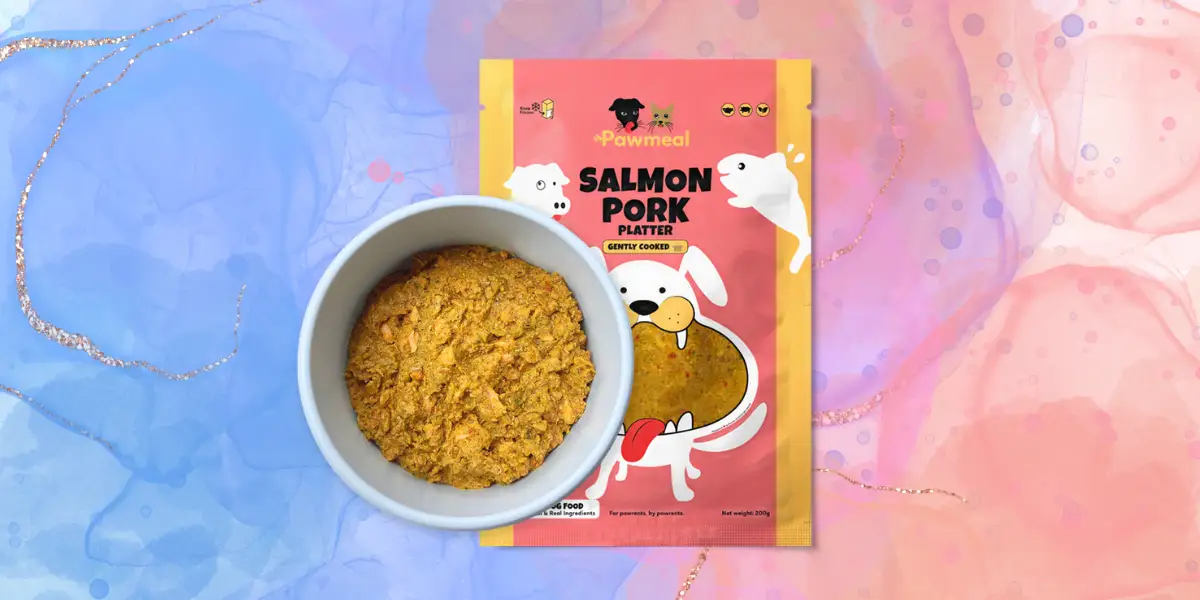
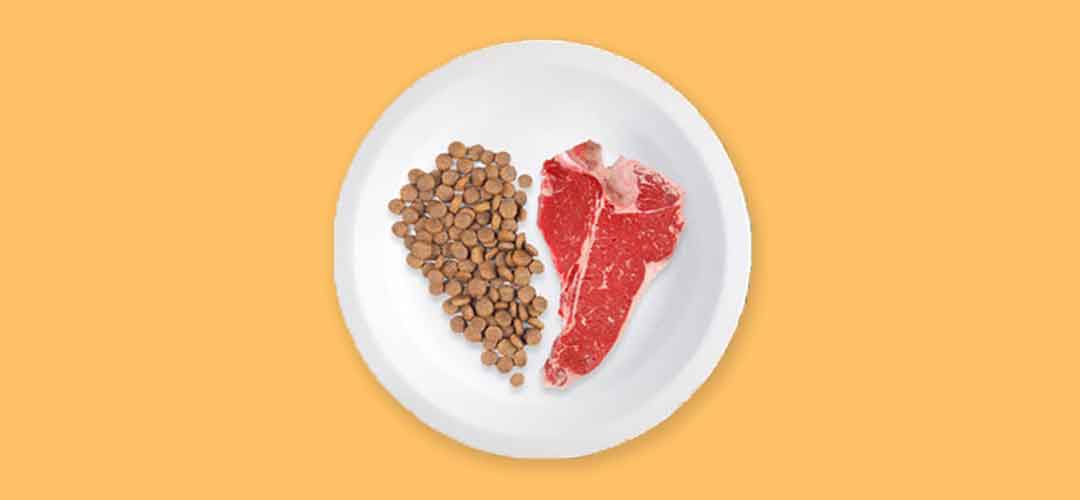
Not sure what type of cat or dog food to feed? Here you can find a quick (and objective) comparison on the different types of cat and dog food choices for your pet. Too long, don’t want to read? Jump straight to the comparison table at the bottom. ?
A lot of pet owners say that their pets often eat better than them. That’s because we all love our furry ones at home! And also because our little ones have body systems that are a little more particular on nutrition. Which means we have to be more careful when deciding on what to feed them.
Today, we treat our furkids like family and this is part of a trend of pet ownership called humanisation. Pet ownership numbers are also rising, partly due to increasing affluence and a way to seek companionship. And especially food is a necessity of our pet’s life, this gives rise to a number of different types of cat and dog food. For a new pet owner, or for a untrained adopter, how do we decide what is the best food for our dogs and cats?
We are faced with so many different choices when it comes to finding the best dog food (or cat food) to feed our pets. However, around 100 years ago, most pets were still eating either home cooked food or the leftover food from their owners. It was during the world war period that kibbles and canned food began to thrive and start to commercialise. The dry food companies, led by Ralston Purina Co., used a high heat method called extrusion to create kibbles. The shelf life of such dry food is very long.
Though kibbles may not be as nutritious as home cooked food, they are easier and cheaper. Then, with rising affluence and competition, new ways of making pet food surfaced – which creates the present vibrant pet food industry. By then, commercial pet food companies were already dominant. With economies of scale, they managed to create different types of dry food. It is only the last few decades that pet owners start to be more aware of potentially healthier alternatives. And this leads to more than just one way to feed our pets today. So what kind of food can you consider for your furkid at home today?
Here are the key types of food choices:

Bowl Of Kibbles
Thanks to the rapid rise of commercial dry food back during the World War II period, kibbles are the first food that comes to most pet owners’ minds today. I also depended on kibbles for years since I adopted Skippy the cat. When you bring a puppy or kitten to the vet, the vet will most likely recommend a special diet. (which is usually a prescription diet by Hill’s or Royal Canin).
If you go to pet shops, the vast majority (if not all) are large packages of dry pallets. Most come with attractive discounts (the larger the packs, the cheaper). Every dry food packaging contains attractive promises, from using of real meat to no artificial ingredients.
Today, most pet owners regard kibbles to be one of the most cost effective and convenient feeding choice. The nutritional composition of kibbles, however, can range from good to suspect. Some better brands are actually formulated by board certified pet nutritionists, which lends credibility to dry food. However, these dry food are still using extrusion, and most kibbles are still high in carbohydrates. You can also read more about whether commercial dog food is beneficial for your dog or cat here.
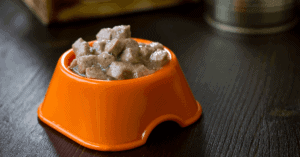
Dog Wet Food
Wet food for pets are another easy and convenient food for pets today. The first canned food came into the market in 1922, by the name of Ken-L Ration. It became popular together with dry food, and together they are the cornerstone businesses of commercial pet food companies. Wet food are the complementary dish to kibbles, as they contain more moisture, which are more palatable to some pets. In order to store wet food for long periods, they often contain high salt content and preservatives. It is much like the luncheon meat that we meat!
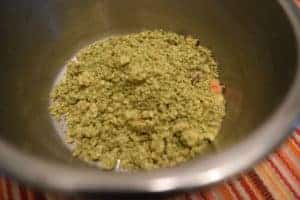
Dehydrated Dog Food
Dehydrated food is now one of the better alternatives to kibbles and canned dog food these days. This is because it combines the best of both dry and wet food. While they come in dried form, pets eat dehydrated food with water, giving them the moisture that they need.
Unlike its dry and wet counterparts, dehydrated food usually locks in (some or most) its nutrients during dehydrating. Some nutrients do get destroyed during the long hours of dehydration, and then there is preservation to make them last under room temperature. When taken out of packaging, the food is hard and only contains around 5% moisture, due to the dehydration process. This means it only takes a little preparation time during feeding. Pawrents just need to add hot water to the food and then mix and break the food down.
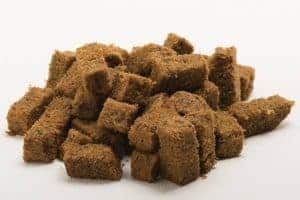
Freeze Dried Food
Freeze dried food for pets contain even less moisture than dehydrated food. This means it is also possible to store it in room temperature like kibbles and canned food. Some pet owners prefer freeze dried or dehydrated due to its higher nutritional content. Being lightweight also means it is easy to store and feed during travel, too.
Unlike dehydrated food, freeze dried food is softer, more crumbly and thus easier to mix with hot water. When mixing with water, the freeze dried pallets releases its concentrated flavours. Some dogs also prefer the taste and smell of freeze dried pet food, compared to the strong (and sometimes salty) smell of kibbles and canned food. Due to its higher nutritional content and better quality ingredients, prices for freeze dried are usually higher than both dry and wet food. However, some may still come with natural preservatives in order to fully ensure they remain shelf stable.

Raw meat in a bowl as opposite of dry dog food
Adventurous or enlightened pet owners are more and more receptive over feeding raw meat to their pets. The rationale is that dogs and cats used to live in the wild, and they prey on other animals. Of course there was no one to cook for them, so they ate them raw.
Those who believe in such a primal method of feeding feel that pets should return to their ancestral roots. After all, animals in the wild have been eating raw for centuries. Raw-feeding pet owner feel that this is the best reflection of how their pet’s life should be.
In terms of overall nutrition, a raw diet is almost second to none. The meats are in its original state and nutrients are undisturbed. However, there has been cases of harmful bacteria and parasites found in the raw meat that goes to the furkid’s bowl. There has even been rare cases of humans getting salmonella from raw pet food. And much of these come from improper handling, inadequate storing or simply using meat that are going stale.
Thus, it is very important to be well-informed if you are thinking of making your own raw diet or buying ready-to-feed raw meat. Pet parents who believe in raw diets also enjoy the relatively easy preparation (they don’t have to cook). Some even buy together with their own consumption to enjoy cost savings.
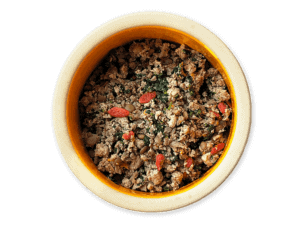
Pawmeal Duck Beef Platter Fresh Food
Ah.. If returning to raw diets is like returning to centuries ago, then feeding cooked food is like returning to the pre-world war period. Pet owners who feed fresh cooked food tend to believe that it is much healthier than commercial food, and pets today, especially pure breeds, are domesticated, urbanised and their bodies are innately not too suitable to eating raw food like wild animals anymore. Gently cooking the food also helps remove most of the harmful bacteria, while minimising the loss of nutrients in the food.
Before the rise in commercial pet food, pets in the family used to eat like their humans. Feeding leftovers or cooking for them specially can be good and bad. Dogs and cats become more immune to different food allergies and they consume less preservatives, more natural stuff. Compared to kibbles and wet food, cooked food are what it is. If portioned and prepared right, it can do a lot more good to pets. However, most of the food that owners make at home may not be as balanced as commercial food. They often depend on estimation and give lots of carbohydrates on their pet’s plate.
Both raw and cooked dog and cat food have their advantages, and their nutrient levels, if formulated properly, are definitely higher than commercial food and even dehydrated or freeze dried food. The key difference lies in the added processed ingredients, and higher carbohydrate levels in commercial food.
Every owner’s experience and their pet’s body is different, and it is subjective to state what is the best dog food for every pet. Furthermore, because every type of cat or dog food has their pros and cons, to state an outright winner will be unfair to the other types of pet food. However, we believe that a proper, comprehensive diet can enable a pet to live longer, stay healthy and happy. Based on our experiences, we feel that a fresh food diet, either raw or cooked, is more real and natural compared to processed, commercial food.
With so many food choices, a lot of pet owners often turn to the most convenient or the cheaper options. However, if you are a discerning owner, perhaps use this article as a head start to do some more in-depth research into each food category. We will share more insights in each category of pet food in more detail.
Our pets depend on us to make the best choices for them. Often, we just decide on what we think is the best for them. We need to also be aware of what is really best for them, that can ensure their longevity and good health for an entire life.
No account yet?
Create an Account
Hi.. do you do cat’s meals? I don’t seem to find it… do let me know thanks
Hello Angela! Thanks for your reply. At the moment we don’t serve cat meals. We are still exploring this possibility though. Will keep you guys updated via here (our website) and our social media channels when we have something fresh cooking! 😊
I like that you talked about how kibbles is regarded as one of the most cost effective and convenient feeding choice. We recently adopted a dog and we are now trying to find out what kind of food it likes. It seems there are quite a few types of dog food so I’d like to check them all out and see what our dog would fancy.
Thanks Luke! We’ll be really interested to find out what your dog fancies! 😊